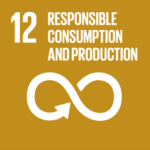CGI Waste Manager helps professional kitchens halve food waste volumes

Case - Published 9.11.2021
Preventing food waste is a concrete way of promoting sustainability in restaurants and other professional kitchens. One of the services supporting the prevention of food waste is a user-friendly monitoring solution developed together with food service professionals. With CGI Waste Manager, clients have been able to halve the amount of food waste.
Research shows that a third of all food produced in the world is lost in different phases of the food production cycle. In Finland, the amount of food waste is approximately 400 million kilograms per year. About one fifth of the waste, 78 million kilograms, is created in the food services industry.
CGI Waste Manager is a service specifically developed to help restaurants prevent production waste, that is, the food thrown away before being served to customers. Production waste can be expired food items, food that is prepared incorrectly, or food that is served but not consumed. With CGI Waste Manager, the amount of customer leftovers can be monitored as well. The solution is best suited for restaurants with a buffet service, for example lunch cafeterias, schools and hotels. Also other types of restaurants and cafeterias have gained significant benefits when using the service.
When the amount of food waste decreases, waste management and raw material costs decrease as well, which increases profitability for the clients. The less food is thrown away, the less harm is caused to the environment.
Prevent food waste by leading with knowledge

CGI Waste Manager is an online application where the kitchen staff add the amount of food waste and information is saved in a real-time. Seeing the actual figures helps staff understand the costs of food waste. In addition to providing training on using the program to report waste, users are also introduced with ways of utilising the collected data and identifying food waste management practices that best serve their restaurant. Small changes in routines and more sensible ways of working can bring significant cost savings in the long term.
By using CGI Waste Manager, some clients have been able to reduce food waste by 30–50% without compromising the quality of their service.
CGI Waste Manager is based on the principles of Lean methodology where visualisation of data is emphasised. The application shows the collected data in various graphs with just a few clicks. Using the solution requires nothing more than a normal kitchen scale, a tablet computer or another mobile device, and user credentials to the solution.
Wasted food equals wasted natural resources
Food production always has an impact on the environment and the climate. If a food item ends up in a waste bin, all natural resources used to produce it are wasted as well, making the environmental impact of food wasted even larger. When most natural resources and energy are used for their primary purpose, we can reduce the amount of carbon dioxide (CO2) emissions.
In the photo at the top of the article are Carlos Henriques (on the left) and Albert Franch Sunyer, founders of the zero-waste restaurant Nolla.
The author of the article Eveliina Lindell is a consultant at CGI.
For more information about Waste Manager from CGI, please contact Director Tero Pollari. Contact information: e-mail tero.pollari(a)cgi.com, phone +358 50 4102450
Agenda 2030
The Waste Manager solution supports Finland in reaching goal 12 of the United Nation’s 2030 Agenda for sustainable development “Ensure sustainable consumption and production patterns”. One of its sub-goals is to halve per capita global food waste at the retail and consumer levels and reduce food losses along production and supply chains, including post-harvest losses by 2030.

